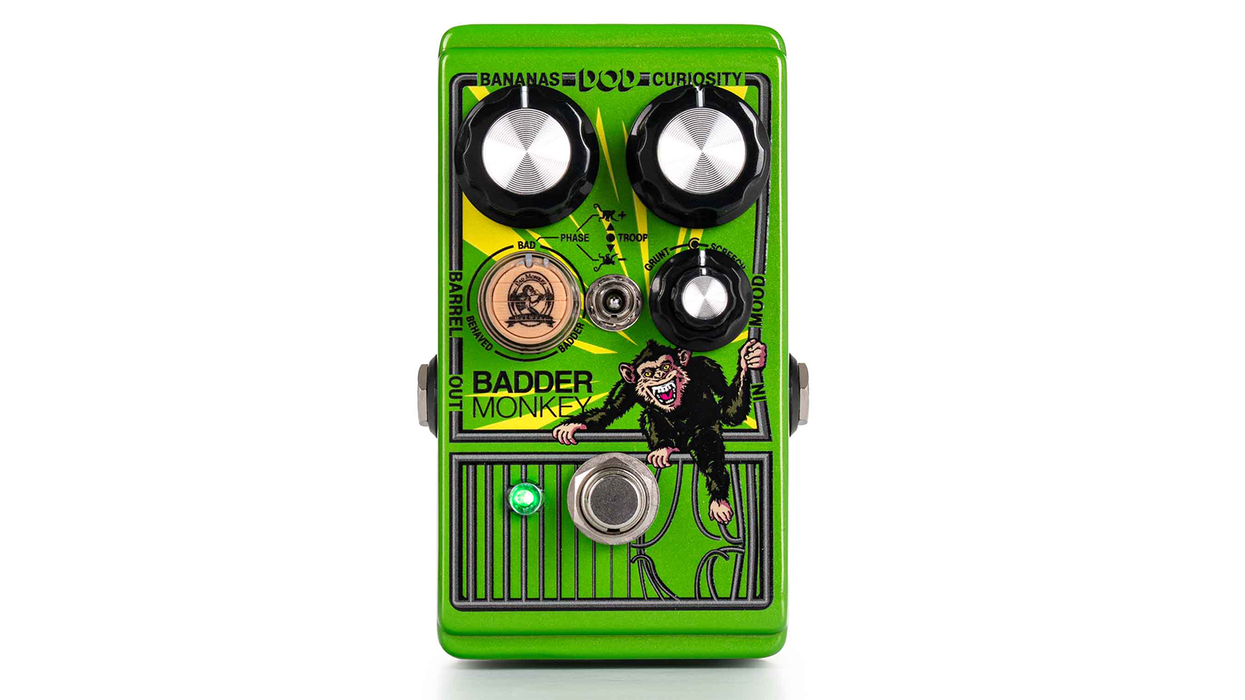The 12/8 time signature can be simple or sophisticated. Toddlers are well versed in the meter, thanks to tunes like “Row, Row, Row Your Boat,” “The Itsy-Bitsy Spider,” and “Pop Goes the Weasel.” Those preschool habits die hard! When adults play in 12/8, we often lapse into those bland, sing-song rhythms. But these exercises can expand your rhythmic choices. They’ll bring energy, interest, and groove to your 12/8 interpretations, with an assist from the rhythms of West Africa.
You know the 12/8 basics, right? We usually count it using four beats per measure, just like plain old 4/4. But in 12/8, each beat is divided into three equal parts. You might vocalize it as:
ONE-and-a, TWO-and-a, THREE-and-a, FOUR-and-a
Ex. 1 shows the pattern in notation. Here, a kick drum marks the four main beats (these are dotted quarter-notes) while a hi-hat plays the 12 eighth-notes.
Click here for Ex. 1
Ex. 2 transforms that rhythm into a four-bar guitar riff over a G–C–D–Em progression.
Click here for Ex. 2
Note: Some musicians, particularly drummers, visualize these grooves as 6/8 rather than 12/8. That doesn’t mean any change in feel—they’re simply dividing each measure into two equal parts.
Ghana Take You Higher
Most of the ideas in this column have roots in West Africa. Victims of the slave trade brought their music to the New World, and their take on 12/8 inspired countless neo-African beats, from Cuba’s bembé and abakwá rhythms to the American South’s blues shuffle.
I was fortunate to learn these concepts from the great Ghanaian scholar and drummer C.K. Ladzekpo, my onetime professor, mentor, and bandmate. C.K. would teach 12/8 rhythms using a bell pattern (Ex. 3) common throughout West Africa.
Tap your foot while the bell rhythm plays. It’s easy to perceive it two different ways. Do you hear it in 3/4, with three beats per measure and two eighth-notes per beat, as heard in Ex. 4?Or as 12/8, with four beats per measure and three eighth-notes per quarter-note, as in Ex. 5?
African musicians inevitably feel this pattern with four beats per measure, as heard in Ex. 5. Ex. 6 transplants the Ex. 5 rhythm to guitar, with the thumb’s bass notes marking the beat.
Click here for Ex. 6
It’s all about three against four—or more specifically, the tension that results when you combine rhythms that split each measure’s 12 notes into four groups of three notes, and rhythms that split the 12 notes into three groups of four notes.
Some mistakenly believe that West African music uses multiple time signatures simultaneously. Not true—everyone feels the main beats in the same place. Ladzepko’s preferred term is “cross rhythm.” The voices and instruments accent different points within a shared pulse. These colliding rhythms generate the composite rhythms that define and animate the groove.
If Six Was Four
In Ex. 7 the thumb plucks the dotted quarter-note pulse, four to the measure. Meanwhile, the fingers play a repeating four-note rhythm. It’s tricky to play, because the beginning of the four-note pattern only coincides with a thumb note every third time around. Playing this might initially feel like doing math. But soon you’ll hear it as a groove, and eventually you’ll be able to exploit such kinetic rhythms whenever you jam in 12/8.
Click here for Ex. 7
Ex. 8 is a fun variation. The notes are the same as in Ex. 7. But here, pull-offs replace individually plucked notes. Once the rhythm infiltrates your fingers and your mind, it’ll start to groove naturally.
Click here for Ex. 8
Have you ever heard the 1980s pop hit “Everybody Wants to Rule the World” by Tears for Fears? If so, you’ve encountered these very rhythms. They permeate the entire song, but are especially prominent in the intro and in Neil Taylor’s splendid first-take solo.
Let’s swap our pop progression for a lazy blues shuffle feel (Ex. 9). It’s the same concept as in Ex. 8, but instead of plucking a constant stream of notes, the fingers strike an accent every fourth eighth-note.
Click here for Ex. 9
Again, it’s not a matter of perceiving two time signatures at once. It’s about feeling the groove generated by the crisscross rhythms. You should still be tapping your foot in four!
Ex. 10 resembles Ex. 9, except now the thumb plays an ongoing shuffle rhythm. It’s trickier at first, but it grooves harder.
Click here for Ex. 10
Extra Credit Accents
If these exercises are challenging (and for most guitarists, they are), take it slowly, focusing on just one exercise till you get the feel. But when you’re ready, here’s another potentially inspiring wrinkle.
You’ve heard how those four-note patterns coincide with every third thumb stroke. So far, the two notes strike simultaneously on the downbeat of each bar. But what if they strike together on the bar’s second, third, or fourth beat? Yup—there are four possible ways to phrase these four-note groupings.
Ex. 11, Ex. 12, and Ex. 13 resemble Ex. 10, but with the coinciding finger and thumb notes falling on the second, third, and fourth beats, respectively.
Click here for Ex. 11
Click here for Ex. 12
Click here for Ex. 13
Feeling ambitious? Try applying these displacements to some of the earlier examples.
Hey, did you notice that little tag on the end of Ex. 13? That’s yet another cross rhythm, one where the thumb maintains the shuffle feel (three eighth-notes per beat) while the fingers pluck two evenly spaced dotted eighth-notes per beat. We’ll revisit this in a future column on swing time, straight time, and the many points in between.



![Rig Rundown: Russian Circles’ Mike Sullivan [2025]](https://www.premierguitar.com/media-library/youtube.jpg?id=62303631&width=1245&height=700&quality=70&coordinates=0%2C0%2C0%2C0)





















